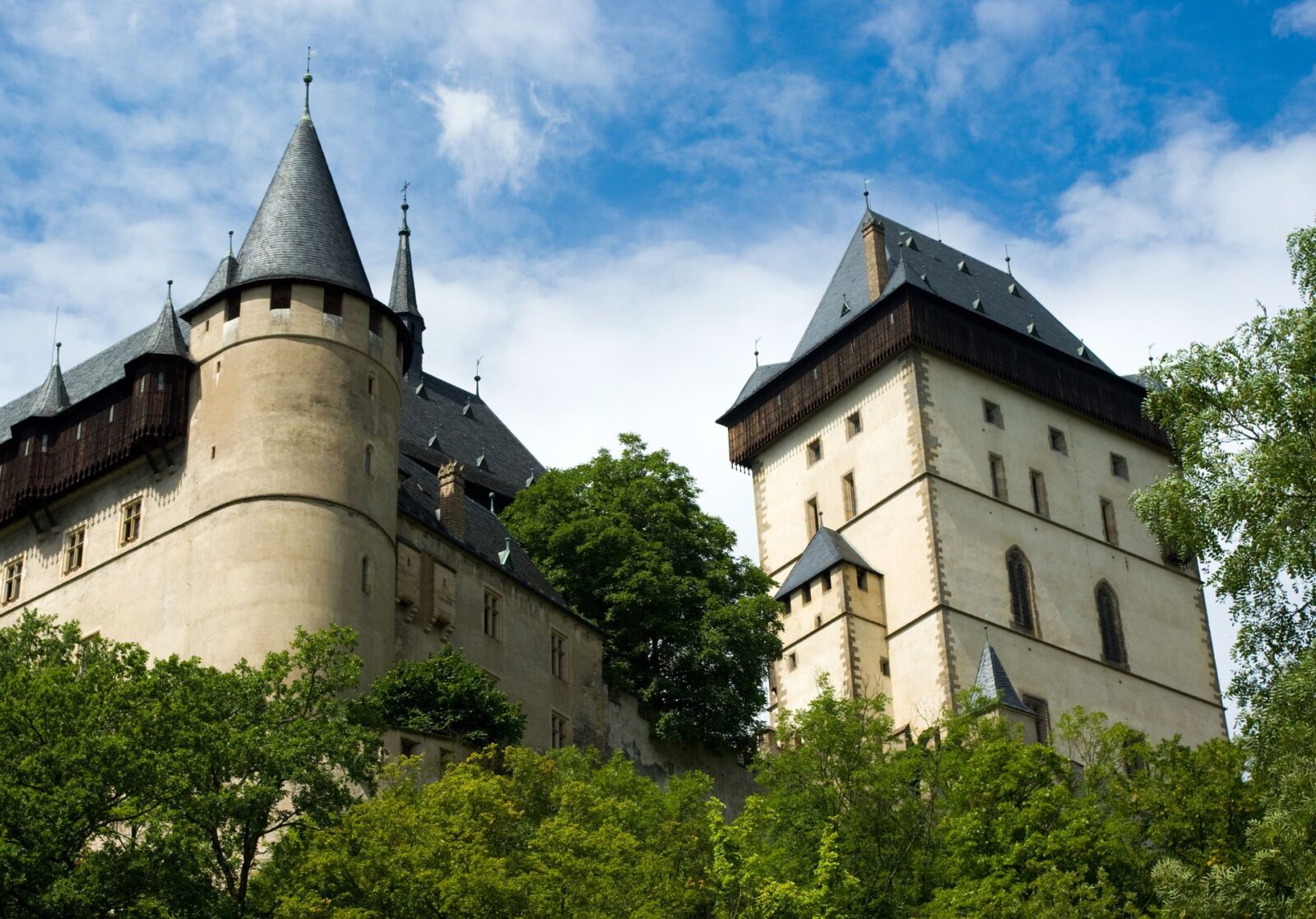Perched majestically atop a limestone hill in the Czech Republic, Karlštejn Castle stands as one of the most significant medieval fortresses in Europe. Built in the 14th century under the reign of Charles IV, Holy Roman Emperor and King of Bohemia, this architectural marvel continues to captivate visitors with its impressive Gothic design and rich historical significance.
Historical Foundation and Purpose
Construction of Karlštejn Castle began in 1348 and was completed in 1365. Charles IV commissioned the castle not only as a private residence but primarily as a secure storage facility for the imperial regalia, holy relics, and the crown jewels of the Holy Roman Empire. This dual purpose influenced its unique architectural design, combining elements of an impregnable fortress with those of a luxurious royal palace.
Architectural Marvel
The castle’s architecture represents the pinnacle of High Gothic design, arranged in a hierarchical manner that reflects medieval symbolism. The structure ascends in both physical height and spiritual significance, from secular spaces at the bottom to the sacred Chapel of the Holy Cross at the highest point. The castle’s most distinctive feature is its 60-meter-tall Great Tower, which housed the imperial treasures in its upper floors.
Notable Features
The Chapel of the Holy Cross, considered the castle’s crown jewel, features walls adorned with 129 panel paintings by Master Theodoric, representing one of the largest collections of Gothic panel paintings in the world. The chapel’s walls are encrusted with semi-precious stones and gold, creating a stunning visual effect that symbolizes the New Jerusalem described in the Book of Revelation.
Historical Significance
Throughout its history, Karlštejn Castle has withstood multiple sieges, including a seven-month assault by Hussite forces in 1422. During the Thirty Years’ War, the Swedish army attempted but failed to capture the fortress. The castle’s robust defenses, including multiple gates, drawbridges, and a sophisticated system of fortifications, proved crucial in protecting its precious contents.
Modern Conservation and Tourism
Today, Karlštejn Castle stands as one of the Czech Republic’s most visited cultural monuments, attracting over 200,000 visitors annually. A major renovation project in the 19th century, led by architect Josef Mocker, restored much of the castle’s Gothic character. The restoration, while controversial among some historians for its romantic interpretation of medieval architecture, helped preserve the structure for future generations.
Visitors can explore various parts of the castle through guided tours, including the Imperial Palace, Marian Tower, and the magnificent Chapel of the Holy Cross. The castle’s museum houses a collection of replicas of the Crown Jewels of Bohemia, along with various medieval artifacts and artworks.
Cultural Impact
Karlštejn Castle has become an enduring symbol of Czech national identity and medieval architectural achievement. Its image appears frequently in Czech art, literature, and media. The castle has been featured in numerous films and documentaries, helping to spread awareness of Czech cultural heritage internationally.
Karlštejn Castle represents a remarkable fusion of military fortification, royal residence, and sacred space. Its architectural innovation, historical significance, and cultural importance make it an invaluable piece of European heritage. As it continues to stand guard over the Bohemian landscape, the castle serves as a testament to medieval craftsmanship and the enduring legacy of Charles IV’s vision. For visitors and historians alike, Karlštejn offers an unparalleled glimpse into the architectural and spiritual ambitions of medieval Europe, while its ongoing preservation ensures that future generations can continue to learn from and be inspired by this magnificent structure.
 Vacation Rentals in CZ
Vacation Rentals in CZ